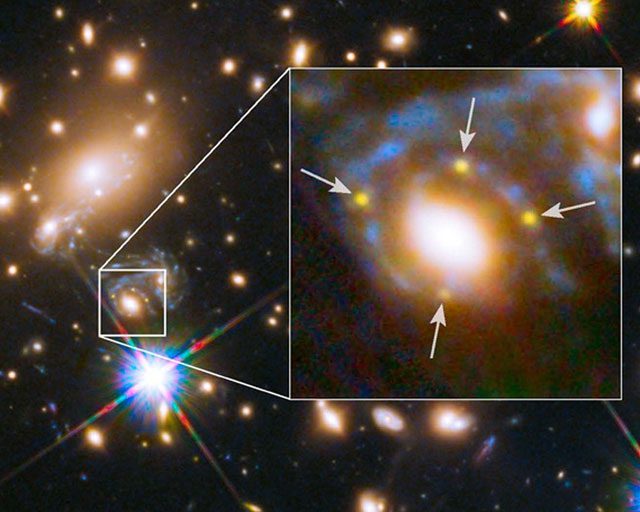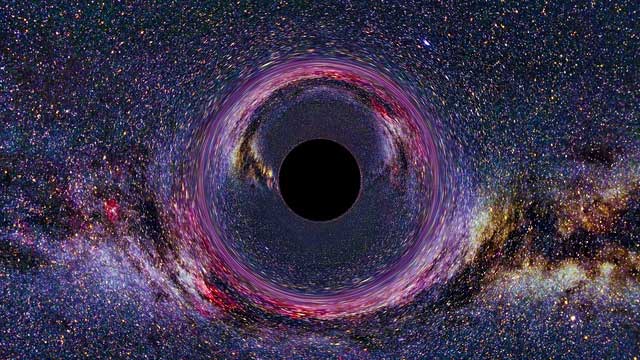For many years, humanity has been filled with curiosity and a desire to explore the mysteries of the universe. In this endless starry sky, the Hubble Space Telescope is known as one of humanity’s greatest scientific tools. Its existence and operation have provided us with tremendous assistance in unraveling the veil of the cosmos.
As one of the most advanced astronomical observation devices today, the Hubble Space Telescope has supplied astronomers with a wealth of high-resolution data and sharp fields of view, revealing numerous fascinating phenomena in the universe. However, during its observations of galaxies, scientists unexpectedly discovered a massive void, igniting their immense interest and curiosity.
This void has been dubbed the relic of “Star Wars” by scientists because its shape resembles the familiar space conflict scenes from the sci-fi film “Star Wars.” Its enormous size has baffled scientists and inspired them to deeply contemplate the formation and evolution of the universe.

The existence of massive voids indicates that the evolution process in the universe is incredibly complex and diverse. The massive voids are formed by the accumulation of supermassive matter, whose strong gravitational effects prevent surrounding matter from escaping, creating a seemingly empty space that actually harbors infinite energy.
Through detailed observations and analyses of the relic of “Star Wars,” scientists have discovered that this massive void is essentially an area with relatively little matter between it and the surrounding galaxies, also known as massive voids. This phenomenon is of great significance in studying the evolution and density distribution of galaxies.

From Hubble’s observations and research, we have discovered that massive voids are not isolated but are distributed around the centers of galaxies or galaxy clusters. This suggests that during the evolution of galaxies, apart from the formation and demise of stars, there is also a complex process of synthesis and diffusion of large-scale matter.
According to scientists’ conjectures, the formation of massive voids in galaxies may be related to the expansion of the universe. As the universe continues to expand, matter will spread outward, creating voids, and the relic of “Star Wars” is a prime example of this. The interaction of matter between these voids and the galaxies is related to the models and rates of the universe’s expansion.

The phenomenon of massive voids proposes a new direction for observation and research, namely “massive dark matter voids.” The voids themselves are not in a vacuum state but are composed of a mysterious substance. This substance, known as dark matter, cannot be directly detected but plays a crucial role in the evolution of the universe. Utilizing observational devices like Hubble allows us to understand the distribution and properties of dark matter through the study of voids, thus delving deeper into the mysteries of the universe.
Further research indicates that there is a mysterious substance called “dark matter” within the relic of “Star Wars.” Dark matter does not participate in electromagnetic interactions, and its existence can only be indirectly observed through its gravitational influence on galaxies. Due to the special nature of dark matter, it tends to be relatively concentrated in massive voids within galaxies, which is also a crucial factor in the formation of these voids.

The universe is a magnificent and complex system, filled with countless galaxies and stars. However, in some areas, the distribution of these galaxies is significantly uneven. The existence of massive voids indicates that in some places, the processes of galaxy formation and aggregation do not occur as actively as in others. This may be related to cosmic background radiation, the distribution of dark matter, and the effects of gravitational forces in the early universe. By observing and studying these voids, we can gain a better understanding of the large-scale structure of the universe and further speculate about its origins and evolution.
The revelation of massive voids in galaxies is of great significance to our understanding of the origins and evolution of the universe. By observing the distribution and shapes of these voids, scientists can infer the density distribution of the universe, the evolutionary state of galaxies, and the deeper structures of the universe. Simultaneously, studying dark matter in these voids will also help clarify its true nature and properties.
No matter what massive voids are, this discovery has sparked controversy and concern worldwide. The universe is a place filled with surprises and mysteries, and only through continuous exploration and understanding can we gain a better insight into it and devise better plans for the future of humanity.


















































